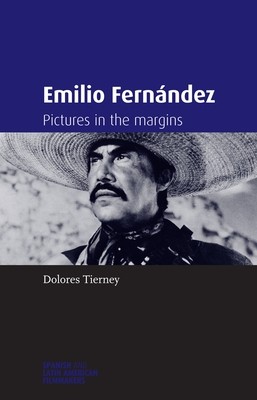
- We will send in 10–14 business days.
- Author: Dolores Tierney
- Publisher: Manchester University Press
- ISBN-10: 0719088445
- ISBN-13: 9780719088445
- Format: 14 x 21.6 x 1.1 cm, softcover
- Language: English
- SAVE -10% with code: EXTRA
Reviews
Description
Emilio Fernández: Pictures in the Margins is the first book-length English language account of Emilio Fernández (1904-1986) the most successful director of classical Mexican Cinema, famed with creating films that embody a loosely defined Mexican school of filmmaking. However, rather than offer an auteurist study this book interrogates the construction of Fernández as both a national and nationalist auteur (including racial and gender aspects e.g. as macho mexicano and indio). It also challenges auteurist readings of the films themselves in order to make new arguments about the significance of Fernández and his work. The aim of this book is to question Mexico's fetishisation of its own position on the peripheries of the global cultural economy and the similar fetishisation of Fernández's marginalisation as a mixed race (part white and part indigenous) director. This book argues that, as pictures in the margins, classical Mexican cinema and specifically Fernández's films are not
transparent reflections of dominant post Revolutionary Mexican culture, but annotations and re-inscriptions of the particularities of Mexican society in the post-Revolutionary era.
EXTRA 10 % discount with code: EXTRA
The promotion ends in 9d.11:13:16
The discount code is valid when purchasing from 10 €. Discounts do not stack.
- Author: Dolores Tierney
- Publisher: Manchester University Press
- ISBN-10: 0719088445
- ISBN-13: 9780719088445
- Format: 14 x 21.6 x 1.1 cm, softcover
- Language: English English
Emilio Fernández: Pictures in the Margins is the first book-length English language account of Emilio Fernández (1904-1986) the most successful director of classical Mexican Cinema, famed with creating films that embody a loosely defined Mexican school of filmmaking. However, rather than offer an auteurist study this book interrogates the construction of Fernández as both a national and nationalist auteur (including racial and gender aspects e.g. as macho mexicano and indio). It also challenges auteurist readings of the films themselves in order to make new arguments about the significance of Fernández and his work. The aim of this book is to question Mexico's fetishisation of its own position on the peripheries of the global cultural economy and the similar fetishisation of Fernández's marginalisation as a mixed race (part white and part indigenous) director. This book argues that, as pictures in the margins, classical Mexican cinema and specifically Fernández's films are not
transparent reflections of dominant post Revolutionary Mexican culture, but annotations and re-inscriptions of the particularities of Mexican society in the post-Revolutionary era.


Reviews